- europages
- >
- COMPANIES - SUPPLIERS - SERVICE PROVIDERS
- >
- seismic
Results for
Seismic - Import export

OZDEKAN RUBBER CO.
Turkey
High damping rubber bearing (HDRB) were developed in 1985 by Professor James Kelly at the University of California at Berkeley. Ozdekan was the first company which manufactured and applied this technology in Turkey, using it in 2014 for the AFAD building in Ankara, Turkey. The isolating system was designed with consultation by engineers. Ozdekan was the first company in Turkey which developed the lead rubber bearings with consultation of university researchers. The HDRB isolators are composed of a series of vulcanized rubber layers separated by reinforcing steel plates, thus providing a device capable of supporting high vertical loads with minimal compression (elevated vertical stiffness) and allowing high horizontal displacements with relatively small reactions (low horizontal stiffness). www.ozdekan.com
Request for a quote
OZDEKAN RUBBER CO.
Turkey
These isolators are similar to the previous but with the exception that the dissipation of energy is obtained also through the use of one or more lead cores. Lead (used here at a level of gg.go% purity) has the property of undergoing plastic deformation as it dissipate energy and then re-crystallizing after a cycle of plastic deformation. Because of this, it is able to sustain an unlimited number of hysteresis loops.
Request for a quote
KELTEKS
Croatia
Ideal addition to our anchoring system for patching holes and preventing cracks. Even the strongest wall can have some weak spots. Patch them up with the strongest carbon reinforcement on the market. No measuring and cutting needed! Take out of the box and apply our solidian Patch Square Carbon just like that. Strong carbon fiber reinforcement mesh Up to seven times higher tensile strength compared to structural steel No corrosion so it’s very durable Our special solidian ANTICRACK rough sanded surface for superior bonding properties 3D corner shaped to all corners and edges Connects walls with ceilings and floors Easy to handle and apply
Request for a quote
KELTEKS
Croatia
Cracks usually appear first where the building structure is the weakest joints, corners, edges! And cracks can travel through walls over time if they are not stopped, further weakening the structure of your building. We think it is best to make sure that cracks do not start in the first place. Strong carbon fiber reinforcement mesh Up to seven times higher tensile strength compared to structural steel No corrosion so it’s very durable Our special solidian ANTICRACK rough sanded surface for superior bonding properties 3D corner shaped to all corners and edges Connects walls with ceilings and floors Easy to handle and apply
Request for a quote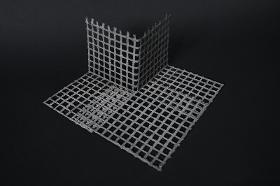
KELTEKS
Croatia
Cracks usually appear first where the building structure is the weakest joints, corners, edges! And cracks can travel through walls over time if they are not stopped, further weakening the structure of your building. We think it is best to make sure that cracks do not start in the first place. Our solidian corner 3D out is specially developed to create the strongest bond in most difficult places of a building. Connecting the ceiling or floor with with an outsidecorner, for example on a chimney, is the most important part. No measuring and cutting needed! Take out of the box and apply our solidian corner 3D out just like that. Strong carbon fiber reinforcement mesh Up to seven times higher tensile strength compared to structural steel No corrosion so it’s very durable Our special solidian ANTICRACK rough sanded surface for superior bonding properties 3D corner shaped to all corners and edges Connects walls with ceilings and floors Easy to handle and apply
Request for a quote
KELTEKS
Croatia
Cracks usually appear first where the building structure is the weakest joints, corners, edges! And cracks can travel through walls over time if they are not stopped, further weakening the structure of your building. We think it is best to make sure that cracks do not start in the first place. Our solidian corner 3D in is specially developed to create the strongest bond in most difficult places of a building. Connecting the ceiling or floor with with an outsidecorner, for example on a chimney, is the most important part. No measuring and cutting needed! Take out of the box and apply our solidian corner 3D out just like that. Strong carbon fiber reinforcement mesh Up to seven times higher tensile strength compared to structural steel No corrosion so it’s very durable Our special solidian ANTICRACK rough sanded surface for superior bonding properties 3D corner shaped to all corners and edges Connects walls with ceilings and floors Easy to handle and apply
Request for a quote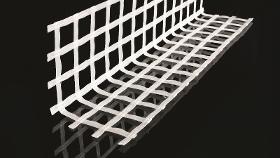
KELTEKS
Croatia
solidian Corner is a specially developed reinforcement for corner protection (inner and external corners). It connects the inside and outside of the wall together with solidian Connector LShape, solidian Connector Open End, and solidian Grid. It is installed directly in fresh plaster or by sprayup technology. long lasting, safe solution – corrosion free compatible with any type of wall – brick, concrete, stone compatible with all types of plaster on the market used in solidian earthquake system
Request for a quote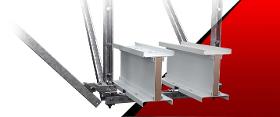
EAE ELECTRIC
Turkey
EAE Seismic Support Systems offer rigid solutions for installations that require earthquake protection. The seismic supports, which can be utilized in any type of installation, allows for quick and easy installation due to the accessories that are designed for steel beam and space roof connections.
Request for a quote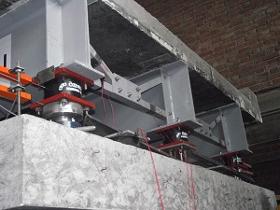
OZDEKAN RUBBER CO.
Turkey
The behavior of the LDRB isolators is highly linear in shear stiffness and the damping ratio is 2 - 3% of critical damping. There is no creep in the material and the stability of the modulus of elasticity is very good. Advantages of LRDB insulators; they can be modulated in a simpleway and they are less affected by the factors that have mechanical behaviors. These insulators may need additional damping elements.
Request for a quote
OZDEKAN RUBBER CO.
Turkey
The bearings we have defined so far are the basic types, which constant feature is the fact that they allow all-ways movements and rotation. However, movements can be limited in one or all ways, thus obtaining guided or fixed bearings, respectively. In the first case -guided bearings- the restriction is obtained by means of guides parallel to the supporting axe that allows movement. To make friction as low as possible, PTFE and stainless steel sheets are welded to the guides.
Request for a quote
FIP ARTICOLI TECNICI S.R.L.
Italy
Curved surface sliders use gravity as a recentering force; the operating principle is the same as the pendulum. Energy dissipation is ensured by the friction of the main sliding surface. The parameters for the bilinear constitutive bond depend on the bending radius and friction coefficient. They are divided into two types, the FIP and FIP-D series, respectively with one or 2 primary sliding surfaces that allow for horizontal displacement. In the case of very wide displacements we recommend to use double curved sliding isolators (FIP-D), which permit to reduce plan dimensions. Experimental hysteretic cycles of a FIP isolator. A FIP-D isolator during testing at the SRMD laboratory of the University of California in San DIEGO. A FIP-D isolator installed in the building "Le Betulle" of Castel di Sangro (AQ).
Request for a quote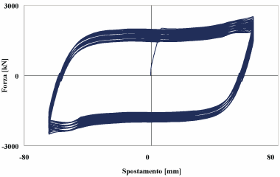
FIP ARTICOLI TECNICI S.R.L.
Italy
These isolators are the combination of a bearing and dampers in a single device; the latter are typically hysteretic dampers of steel and/or fluid viscous dampers. As such, they are characterized by a high damping capacity. The bearing can be multidirectional or unidirectional. Isolators can also include shock transmitters or mechanical fuse restraints. Experimental hysteretic cycles of a flat sliding isolator with steel hysteretic dampers. Installation of a flat sliding isolator with steel hysteretic dampers, at the Santuario 'Madonna delle Lacrime' of Siracusa. Flat sliding isolators with steel hysteretic dampers, installed in the railway lines "Caracas-Cua" and "La Encrucijada-Puerto Cabello", Venezuela.
Request for a quote
FIP ARTICOLI TECNICI S.R.L.
Italy
LRB isolators are elastomeric isolators with a cylindrical-shaped core of lead. The plasticization of lead permits to obtain an equivalent viscous damping coefficient up to approximately 30%. The constitutive bond of LRB isolators is bilinear; for design purposes it is possible to use equivalent non-linear or linear models, according to regulatory provisions. Experimental hysteretic cycles of an LRB isolator at a 0.5 Hz frequency and cutting deformation ± 100%. Vibrating table tests on an LRB isolator at the National Technical University of Athens (Greece). LRB isolators installed in the office building "La Torre" of Ancona.
Request for a quote
FIP ARTICOLI TECNICI S.R.L.
Italy
The SI-series elastomeric isolators consist of alternate layers of steel and elastomer connected by curing. Their behaviour can be modelled as linear, based on equivalent stiffness and the equivalent viscous damping coefficient. Usually they are made of high-damping elastomeric mixtures, i.e. with equivalent viscous damping coefficient between 10 and 15% and shear deformation of 100% Experimental hysteretic cycles of a SI isolator at a 0.5 Hz frequency and shear deformation ± 100% Preparation, at FIP INDUSTRIALE laboratory, of an experimental test on two SI isolators of diameter 1150 mm. A SI isolator installed at the "Da Luz" hospital of Lisbon (Portugal).
Request for a quote
FIP ARTICOLI TECNICI S.R.L.
Italy
They are divided into three categories: TEMPORARY Shock transmitters OT PERMANENT Guides and restraints GU, NET, FP, MCT MECHANICAL FUSE Mechanical fuse restraint devices SR
Request for a quote
FIP ARTICOLI TECNICI S.R.L.
Italy
They are divided into two macro-categories: NON-LINEAR Steel hysteretic dampers MEL, MEP, BRAD Elastic devices NE Shape-memory alloy devices SMAD LINEAR Elastomeric visco-elastic damper s EVED
Request for a quoteDo you sell or make similar products?
Sign up to europages and have your products listed
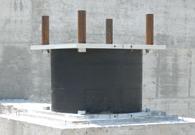
FIP ARTICOLI TECNICI S.R.L.
Italy
They are divided into two categories: ELASTOMERIC Elastomeric isolators SI Elastomeric isolators with lead core LRB SLIDING Curved surface sliders FIP, FIP-D Flat surface sliders with dampersi VEL, VEP, VOP, VOTP, VELOP, VELOTP
Request for a quote
FIP ARTICOLI TECNICI S.R.L.
Italy
They protect buildings, bridges, flyovers, or any other facility, changing their reaction to the seismic action or other dynamic actions (for example wind). Most seismic devices are used within the innovative approach to seismic engineering, to change the seismic reaction of a structure by seismic isolation and/or energy dissipation. Namely: • ISOLATORS: they limit the acceleration transferred to the structure and reduce inertial stress by increasing the oscillation period. • DAMPERS: they dissipate part of the energy transferred to the structure according to their constitution, based on which they are divided into two large families, speed-dependent devices and displacement-dependent devices. On the other hand, FIXED RESTRAINT DEVICES are traditionally used in the traditional approach to seismic engineering, to transfer horizontal stress. TYPES: Seismic isolators Speed-dependent devices Displacement-dependent devices Fixed restraint devices
Request for a quoteResults for
Seismic - Import exportNumber of results
20 ProductsCountries
Company type
